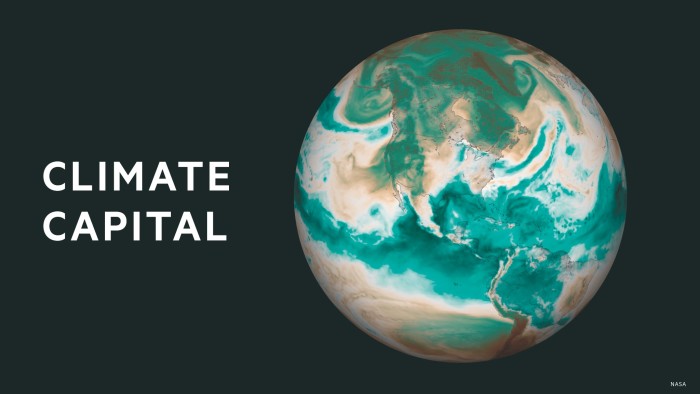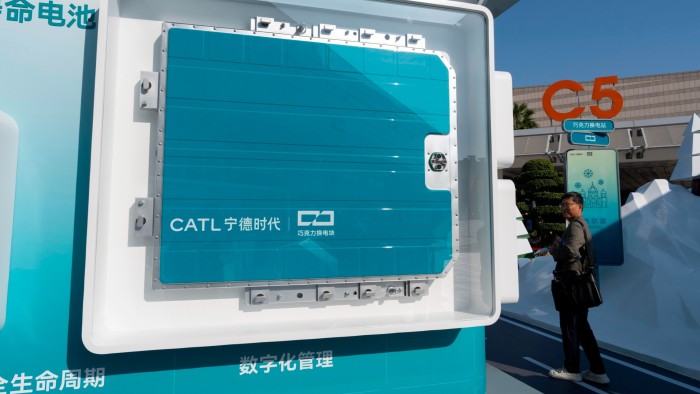Unlock the Editor’s Digest for free
Roula Khalaf, Editor of the FT, selects her favourite stories in this weekly newsletter.
CATL, the world’s largest maker of electric vehicle batteries, plans to bring its battery-swapping and recycling technology to Europe, amid a global battle to secure more sustainable EV supply chains.
In an interview with the Financial Times, Jiang Li, the Chinese group’s board secretary, said battery swapping — in which EV drivers exchange depleted cells for fully charged ones — had “huge potential” in Europe to make batteries cheaper and longer-lasting.
Battery swapping, technology pioneered by Chinese electric-car maker Nio, takes minutes and lowers the upfront cost of buying an electric car, as drivers do not own their own batteries — the most expensive components of an EV. It also enables the cells to be used for longer.
Battery swapping had been slow to expand outside of China due to the high cost of building the service stations required. But it is gaining traction amid growing concerns about battery supply chains on the back of rising geopolitical tensions and growth in EV sales.
Other companies have already started to introduce battery swapping to Europe. Nio operates 60 power swap stations in Germany, the Netherlands, Norway, Sweden and Denmark. Stellantis recently brought battery swapping to its fleet of Fiat 500 electric vehicles in Spain via its Free2move car-sharing service.
But CATL, which added a Hong Kong listing in May, has plans on a larger scale. It is hoping to build 1,000 battery-swap stations by the end of this year in China and 10,000 stations in three years.
“Then we can copy the business model in Europe and other regions,” Li said during an event in London, adding the group had already discussed using swapping technology on the continent with carmakers.
Li’s comments come as Brussels is increasing pressure on Chinese companies entering the EU car market to form joint ventures with European companies or license parts of their technology.
Li said international co-operation was critical to ensure sustainable battery supply chains — a growing priority for countries worldwide. Nations, led by the US, are seeking to reduce their dependence on China for the critical minerals crucial for the transition to electric vehicles. Companies are also looking for ways to make batteries last longer and to recycle the materials for reuse.
CATL has already licensed its battery manufacturing technology to Ford and Tesla, and has a joint venture with Stellantis to build a €4.1bn lithium battery factory in Spain.
“We are facing some difficulties in geopolitics, but we are still open to co-operating, especially in research and development,” he added. “We don’t want to make money with only one company. We want to share.”

CATL is partnered with non-profit organisation the Ellen MacArthur Foundation on initiatives designed to create a circular economy. “To create that market demand [for a circular economy], you need a crisis and a tipping point, which is exactly now,” said Jonquil Hackenberg, chief executive of the foundation.
CATL, which acquired Chinese battery recycling group Brunp in 2015, claims it can achieve a near 100 per cent recycling rate for core critical minerals such as nickel, cobalt and manganese. Its swapping technology makes it easier to recycle batteries, as they can be collected in bulk from service stations instead of from individual vehicles.
Li said CATL wanted to bring its recycling technology to Europe but cautioned that stricter regulations and higher costs would make establishing a profitable business harder on the continent.
In China, CATL has signed up more than a dozen truckmakers to use its batteries as part of a broader strategy to diversify its revenue streams.
The group also plans to install as many as 300 swapping stations across many of China’s main trucking routes, with a target of expanding that network to 150,000km of expressways and trunk roads covering 80 per cent of the country’s main freight roads.
Climate Capital

Where climate change meets business, markets and politics. Explore the FT’s coverage here.
Are you curious about the FT’s environmental sustainability commitments? Find out more about our science-based targets here
